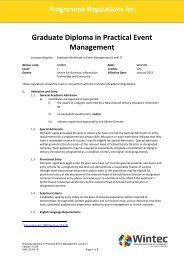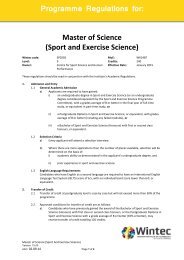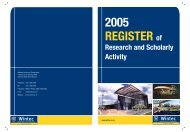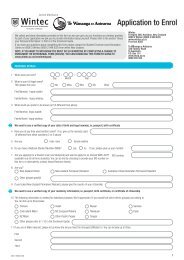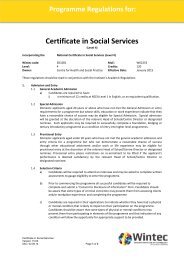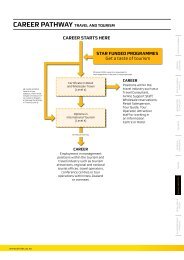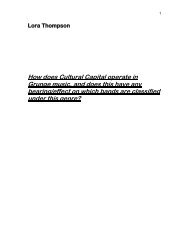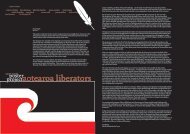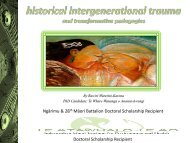Nursing Handover Research Project - Wintec Research Archive
Nursing Handover Research Project - Wintec Research Archive
Nursing Handover Research Project - Wintec Research Archive
You also want an ePaper? Increase the reach of your titles
YUMPU automatically turns print PDFs into web optimized ePapers that Google loves.
Most errors are part of a greater scheme of things. Rather than the individual it is the system<br />
that fails (Wong). There also seems to be a lack of understanding around error prevention and<br />
system thinking. The ‘Swiss cheese model of system failure’ describes this well in that lots<br />
of different factors may contribute to an error, that one hole in one slice of cheese may relate<br />
to individual error but it is when many holes line up that there are grave consequences<br />
(Carthy & Clarke, 2009). Strong management and leadership are required in policy<br />
development, staff education and resource distribution (Wong, 2002). Limiting the number of<br />
contributing factor or by creating fewer holes in the cheese ultimately there is less chance of<br />
error (Carthy & Clarke, 2009; Kadzielki & Martin, 2001; Wong).<br />
There are four types of errors; execution error, planning error, active error and latent error<br />
(Kadzielki & Martin, 2001). In response to error many health providers concentrate on active<br />
error which is error by the on floor nurses instead of latent error which involves procedural<br />
problems that lead to nurse error (Kadzielki & Martin). In contemporary practice times an<br />
individual blame response to error is not useful. Fair blame rather than no blame has merits<br />
(Carthy & Clarke, 2009). <strong>Handover</strong> is a situation fraught with potential risks so it is<br />
important to discuss handover with the nurses involved looking at the strengths, weaknesses,<br />
opportunities and threats in relation to the process rather than the nurse.<br />
<strong>Nursing</strong> handover is a ritual that performs a protective function for nursing in that it meets<br />
certain psychological, social and cultural needs for nurses (Strange, 1996). The handover<br />
ritual glues the group together, unites them by creating common meaning. <strong>Handover</strong> creates a<br />
place where nursing values and beliefs are shared and passed on (Philpin, 2006). Rituals<br />
value nursing knowledge and offer the participants an opportunity for knowledge exchange<br />
(Strange, 1996). Nurses do not work in a controlled environment so the handover ritual<br />
creates a situation to relieve professional angst (Philpin, 2002). It is a professional space to<br />
give away their workload that is free from outsider comment and judgement.<br />
Key elements of nursing are lost in the construction of nursing handover. One key element is<br />
emotion in particular anxiety. Anxiety is not synonymous with stress (Wiltshire & Parker,<br />
1996). Anxiety relates more to nurse and internal distress whereas stress is associated with<br />
the external environment and stressors upon the nurse (Evans, Pereira & Parker, 2008a). The<br />
major identifiable stressor to nurses is their workload followed by stressors linked to their<br />
workload such as staffing; skill mix, time and role overload (Evans et al.). These stressors<br />
27



